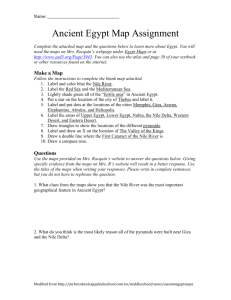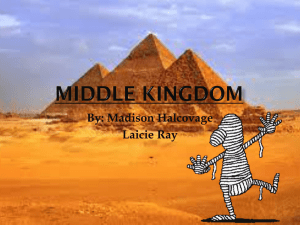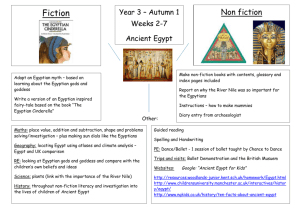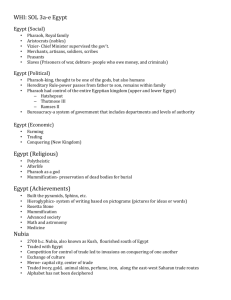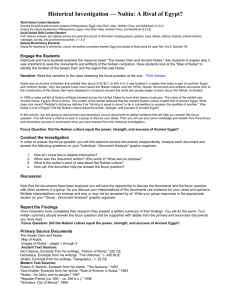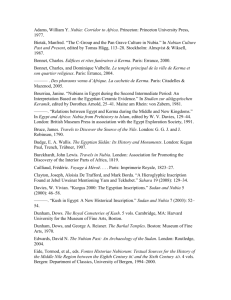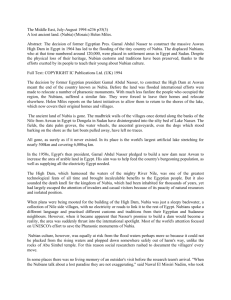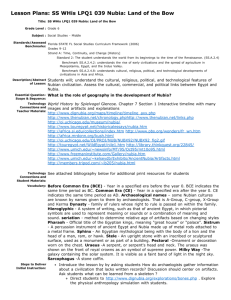Unit 2 - course notes
advertisement
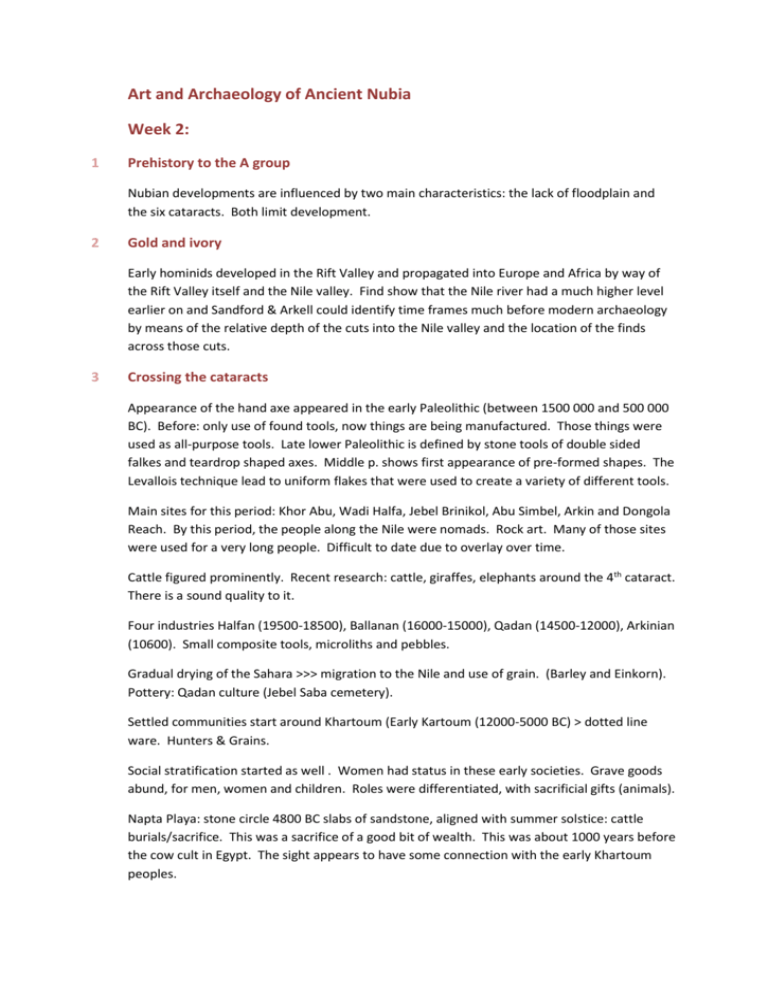
Art and Archaeology of Ancient Nubia Week 2: 1 Prehistory to the A group Nubian developments are influenced by two main characteristics: the lack of floodplain and the six cataracts. Both limit development. 2 Gold and ivory Early hominids developed in the Rift Valley and propagated into Europe and Africa by way of the Rift Valley itself and the Nile valley. Find show that the Nile river had a much higher level earlier on and Sandford & Arkell could identify time frames much before modern archaeology by means of the relative depth of the cuts into the Nile valley and the location of the finds across those cuts. 3 Crossing the cataracts Appearance of the hand axe appeared in the early Paleolithic (between 1500 000 and 500 000 BC). Before: only use of found tools, now things are being manufactured. Those things were used as all-purpose tools. Late lower Paleolithic is defined by stone tools of double sided falkes and teardrop shaped axes. Middle p. shows first appearance of pre-formed shapes. The Levallois technique lead to uniform flakes that were used to create a variety of different tools. Main sites for this period: Khor Abu, Wadi Halfa, Jebel Brinikol, Abu Simbel, Arkin and Dongola Reach. By this period, the people along the Nile were nomads. Rock art. Many of those sites were used for a very long people. Difficult to date due to overlay over time. Cattle figured prominently. Recent research: cattle, giraffes, elephants around the 4th cataract. There is a sound quality to it. Four industries Halfan (19500-18500), Ballanan (16000-15000), Qadan (14500-12000), Arkinian (10600). Small composite tools, microliths and pebbles. Gradual drying of the Sahara >>> migration to the Nile and use of grain. (Barley and Einkorn). Pottery: Qadan culture (Jebel Saba cemetery). Settled communities start around Khartoum (Early Kartoum (12000-5000 BC) > dotted line ware. Hunters & Grains. Social stratification started as well . Women had status in these early societies. Grave goods abund, for men, women and children. Roles were differentiated, with sacrificial gifts (animals). Napta Playa: stone circle 4800 BC slabs of sandstone, aligned with summer solstice: cattle burials/sacrifice. This was a sacrifice of a good bit of wealth. This was about 1000 years before the cow cult in Egypt. The sight appears to have some connection with the early Khartoum peoples. Shift in cultivation patterns around 4000 BC: evidence of domesticated animals and barley plantations. Tall flaring rim beakers > better than similar predynastic upper Egypt. 4 A-group pottery Tall pots, polished surfaces. Black top technique like predynastic Egypt: thin fine pottery. 5 Who were the Nubians? Refined pottery: two Nubian systems: A-Group and Pre_Kerma. A-group = agricultural. Wadi Kubinya to the second cataract: Early, Classical, Late. Ended 3000 BC. Hunting gathering fishing, but also agricultural endeavours. Pottery with impressed motifs = trade up to Palestine. Burials in foetal position. Lots of grave goods made from bone or stone. Lots of cosmetic pallet made of milky quartz. Harder stone than in Egypt. Gold deposits near quartz > Nubians were used to work quartz. Later the society become more centralised. Egyptian goods appear in Nubia (A-Group). Terminal A-group goods ffound up to Egypt: This period starts to show chiefs and kingdoms. Tombs now show copper objects probably imported from Egypt. Not a pastoral society of hunters and small villages. The rich graves at Qustul suggest a sophisticated royal state, though. Similar time frame to Upper Egypt and early kingship in Egypt. Similar symbols of kingship: horus falcon, bulls, cartouches, etc. Ivory was important to Egyptian: Abu = Elephant in Egyptian. Eg. Early dynastic period > campaigns against Nubia to secure goods. Hora’a led an expedition against A-group Nubia. This forced the A-group south This started the disappearance of this group. Were they incorporated to the Kerma culture, or did they revert to nomadic culture with the control of Egypt in Nubia? Egypt invited Nubians as soldiers after their incursions south. Buhan: important center of Egyptian power through to the Middle kingdom. A rock carving at Jebel Sheikh Suleiman has been identified as depicting the victory of Egypt over Nubia. Struggle for resources between Egypt and Nubia. Egypt one this round, but further Nubian cultures would contest this victory.



